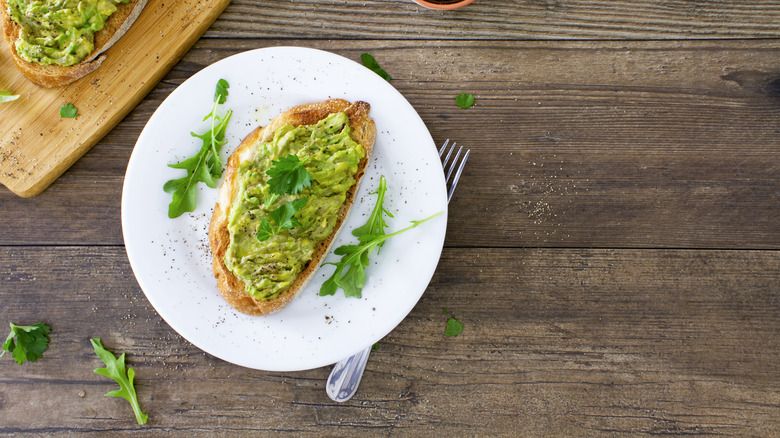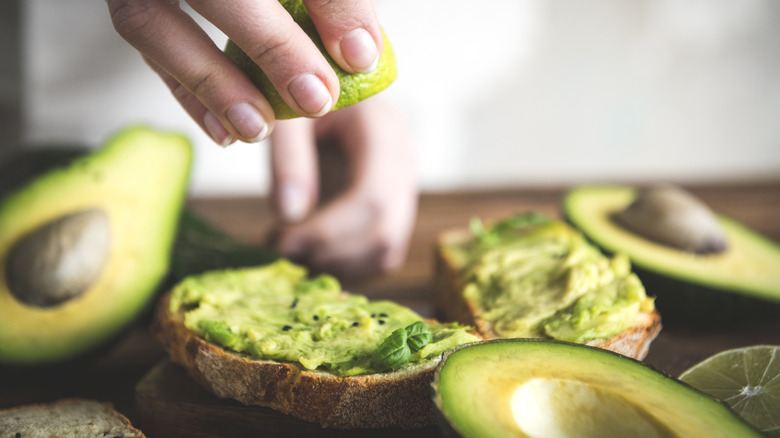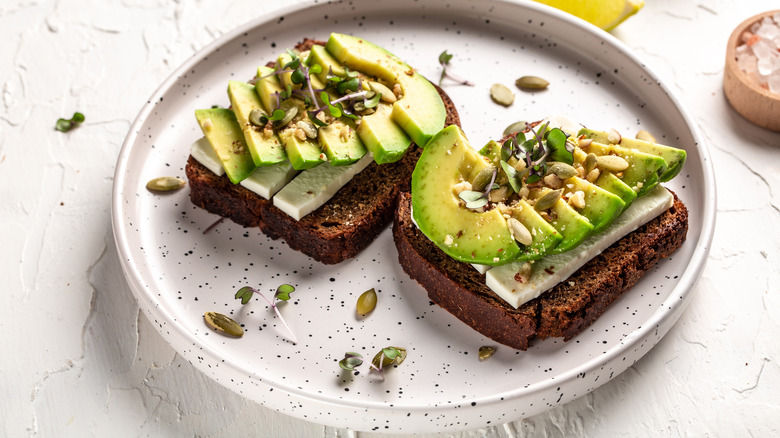What Drove The Internet's Love For Avocado Toast? A Post-Mortem
Avocado toast again? It was arguably the first viral food of the Instagram era, but while other social media obsessions seem to come and go like the wind, avocado toast has lingered — a fad that ultimately became a constant internet presence. Nowadays, the online community's view on avocado toast has shifted a long way from its initial popularity. The dish has come to represent all that is ill with "bougie" culture, perceived as overhyped, overpriced, and more about trendiness than substance. Its association with the millennial generation has elicited mockery from both baby boomers and Gen Z, and it has generated more memes than possibly any other food.
How did something so simple become such a point of obsession, for good and for bad, and how has it lingered so much longer than other social media food trends? Avocado toast's versatility is a huge factor here — the options for additional toppings like seasoned fried eggs and homemade chili oil are seemingly endless — but there must be more to it than that. To chart the rise of avocado toast, as well as its fall into a subject of mockery, we can point to a particular polarizing celebrity.
How avocado toast became the internet's favorite food
Nobody can say who first thought to spread avocado on toast, but a lot of origin theories have been proposed. The modern avocado toast trend kicked off in Australia, thanks to a Sydney restaurant called Bill's, which began serving it in the 1990s. A former chef at Bill's later opened the restaurant Sqirl in Los Angeles, which would come to epitomize the high-priced, Instagrammable avocado toast of SoCal.
But avocado toast existed long before the '90s. Records from the British Virgin Islands mention it as early as the 1840s, and recipes for it were already popping up in American newspapers back in the 1920s. Many have argued that the basis for avocado toast is the combination of avocados and tortillas, which has been eaten in Mexico for thousands of years. It is also a traditional food in the Caribbean, where avocados grow commonly.
At some point, avocado made a jump from simple breakfast to cultural sensation, and for that, we can largely thank Gwyneth Paltrow. In 2013, she published a cookbook with an avocado toast recipe, claiming it was the food she made most often. Food bloggers picked up on it, and it took off from there. The simultaneous rise of Instagram in the 2010s only further fueled the food's reputation, and the demand for avocados skyrocketed.
How avocado toast became the internet's most hated food
As avocado toast's profile rose through the mid-2010s, critics emerged. Most of the derision directed at avocado toast hinges on how expensive it can be — Sqirl sells a single piece for $12 and the Beverly Hills Hotel charges a whopping $38 (theirs includes smoked salmon, but still). Many have chalked up avocado toast's price to mere social media clout, but there's more to it than that. There is a dark side to avocado toast, and the fruit's expensive, environmentally damaging production translates to high prices for the customer. The increased demand for avocados triggered by the toast trend only exacerbated this.
The true decline of avocado toast from social media darling to punchline came in 2017, when Australian millionaire Tim Gurner did a highly controversial 60 Minutes interview. He suggested that millennials were unable to afford homes because they were spending too much money on avocado toast. Gurner was immediately roasted by the internet, called out for his seeming ignorance of the housing crisis. Social media users began posting memes about their outrageous avocado toast budgets to point out the absurdity of the claim. Soon, avocado toast became a symbol for the way that older generations blame younger ones for societal ills. Sarcastic comments about avocado toast have only escalated since, and at this point, the meme seems to have outweighed the dish's original charm.


